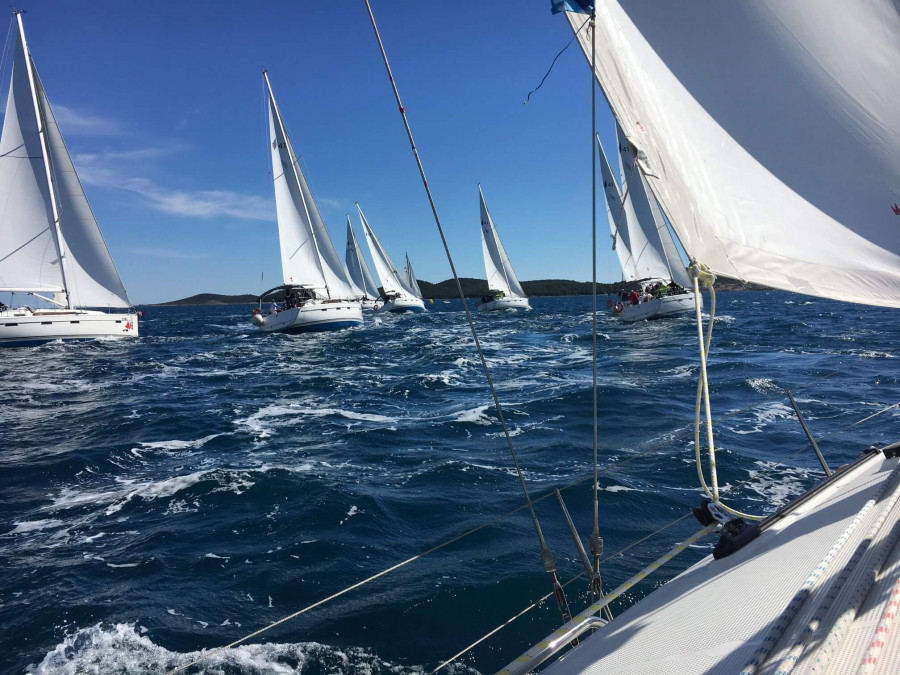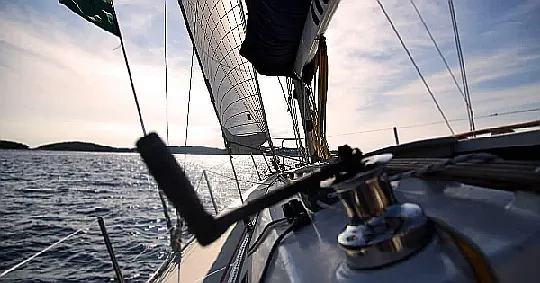12.05.2021.
There are various types of sailboats to choose from. So, how do you know which one is the right one for you? Check out our in-depth guide to find out.
A treat for your senses, sailing offers a freedom like no other It allows you to discover a whole new dimension of living.
Whatever direction you take, it is our not so humble opinion that sailing is definitely one of the greatest and accessible ways to discover the beauty of Croatia – and the world.
When it comes to sailboats, you want to know that you’re choosing the right one for your holiday for a number of reasons, such as stability.
With so many to choose from, how do you know you’re picking the right one? We have compiled an in-depth guide that will make the selection process that much easier.
Keep reading to find out the types of sailboats out there, and find the perfect one for you today.
Different Types of Sailboats
There are three main types of sailboat designs out there. They are:
• Monohulls
• Catamarans
• Multi-hulls
In terms of the most common type of sailboat, that would have to be a monohull. They are both cheaper and easy to maintain. On the other hand, both catamarans and multi-hulls offer greater stability.
Catamarans are the second most common sailboat, offering speed, efficiency, and comfort. Unlike the monohull, the catamaran contains two hulls, which doesn’t leave as much room for the galley, or living areas.
Trimarans and multi-hulls are becoming increasingly popular amongst customers and can have from three to five hulls. What makes them different from the first two sailboats is that multi-hulls are considerably faster, although easier to control.
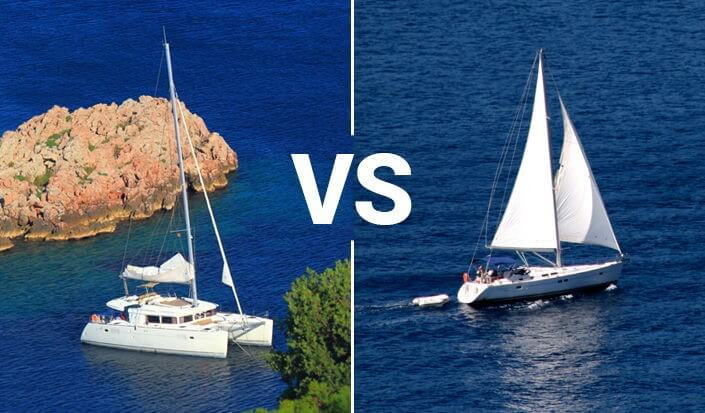
What makes them so popular is the fact that the additional hull also makes for extra space for passengers.
Sailboats are then categorised into various models:
• Beach catamaran
• Cruising catamaran
• Cruising sailboat
• Daysailer
• Motorsailer
• Racer-cruiser
• Racing sailboats
• Sailing dinghies
Sailboats are also distinguishable in terms of the configuration of their mast and sail, otherwise known as rigging:
• Sloop
• Cat or catboat
• Cutter
• Schooner
• Ketch
• Dinghy

Parts of a Sailboat
The freedom of sailing captivates virtually anyone that steps foot on a sailboat. Here are the parts of a sailboat you should know about:
Hull – This is the waterproof body of the boat. It can come in a number of shapes and materials like wood, fibreglass, aluminium, and even steel.
Bow – The front of the boat.
Stern – The back of the boat.
Keel – The keel is a flat blade that goes into the water and is found on the hull’s bottom. It not only provides counterbalance but also prevents the sailboat from capsizing.
Rudder – This is the vertical blade that is attached to the back or under the boat. Its primary purpose is to steer the boat through the water.
Mast – The tall pole that sits vertically on the sailboat supporting sails. If you’re on a larger vessel, it is likely that there will be multiple masts. They can include the foremast, the mainmast, and the mizzen mast.
Boom – This is the horizontal spar that is attached to the aft of the mast – just beneath the sail. It helps keep the sail flat when it is at an angle.
Jib – Triangular sail that sits at the foremast of the sailboat.
Kicking Strap – This is the line that connects the boom to the lower mast.
Topping Lift – You use this line to hold the boom as you lower the sail.
Spinnaker – This is the sail you use when sailing off the wind. When deployed, it fills up with wind and resembles a balloon, and for that reason is sometimes referred to as a chute (parachute).
Genoa – The sail that extends past the mast and overlaps the mainsail.
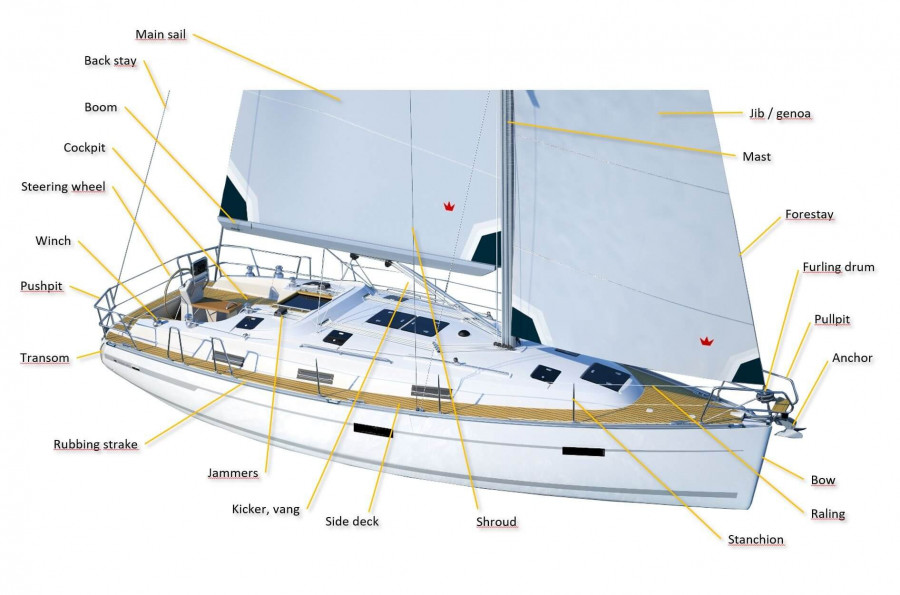
Fastest Sailboats
The fastest types of sailboats include:
• Specialised performance boats (65.45 knots)
• Windsurfers and kiteboards (50+ knots)
• Foiling monohulls (50 knots)
• Foiling multi-hulls (44 knots)
• Performance multi-hulls (20 knots)
• Offshore racing monohulls: (under 20 knots)
Sailboat Design
Great sailboat performance depends greatly on its design. Not only should be vessel be easy to handle, but it should also have enough space to accommodate both crew and necessary sailing equipment.
When considering sailboat design, it’s crucial to think about what type of use you will be using your sailboat for, whether cruising or racing.
Is interior space a priority? What about the comfort and safety on deck? Do you have the right crew, or will you be short-handed, and does your sailboat cater to this type of functionality?
Sailboat Accessories
Leaving the dock and going sailing is an experience that cannot be described in words. You need to try it to believe it. However, you should ensure that when sailing around Croatia, you have all the right sailboat accessories that will guarantee a safe sailing experience.
Here are some of the most important accessories you need on your sailboat:
• Life raft
• Grab bag
• 406 MHz EPIRB
• Handheld VHF radio
• SOLAS grade signals and flares
• Emergency watermaker
• Radar reflector
• Portable fire extinguisher
• Patching materials
• Throwable lifeline sling
• Inflatable life jackets
• Safety harness and tethers
• Deck shoes
• Hats
• Gloves
• Shortwave receiver
• Spare antenna
• VHF marine radio, antenna
• Weather map solutions
• Depth sounder and knot log
• Main compass
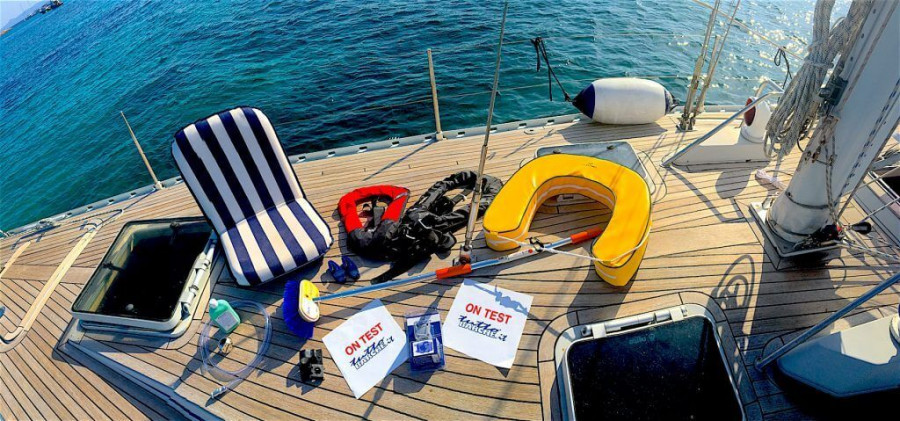
Cost – How much does a Sailboat cost
The cost of a sailboat depends on multiple factors, including the size of the sailboat, whether it is new or used, and, of course, the model. A small to medium sized used sailboat can set you back around $20,000 through to $80,000. More extensive models or a new one can go for $150,000.
When you purchase a sailboat, you also have to consider annual maintenance and mooring costs.
However, a spectacular week or two on the Adriatic coast doesn’t have to cost you’re a fortune. You can always hire out a sailboat and enjoy this once in a lifetime experience at a fraction of the cost.
Understanding the Anatomy of a Sailboat
Understanding the design and anatomy of your chosen sailboat is extremely important before taking it out to sea. Although you don’t have to be a sea-faring expert, it is significantly important for you to have a general understanding of your boat.
This ensures the safety of all guests and crew on board, as well as your ability to fix something in case it is needed.
Of course, this can all be learned from expert skippers that we arrange next time you decide to sail Croatia.
